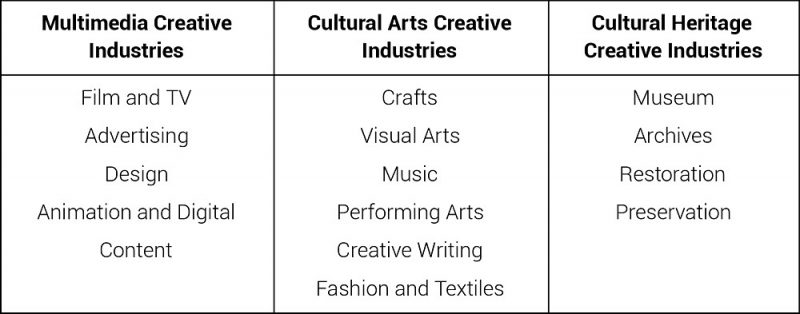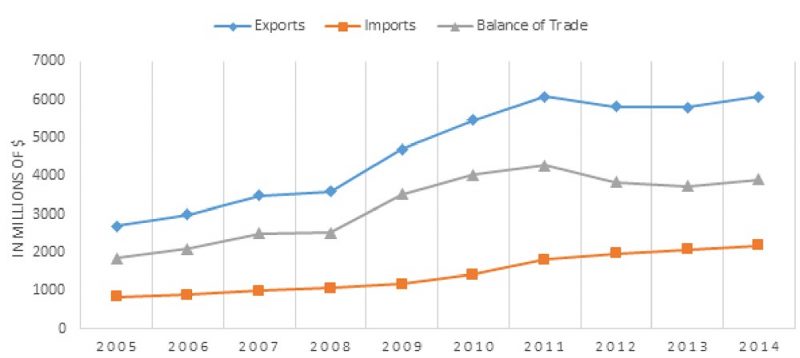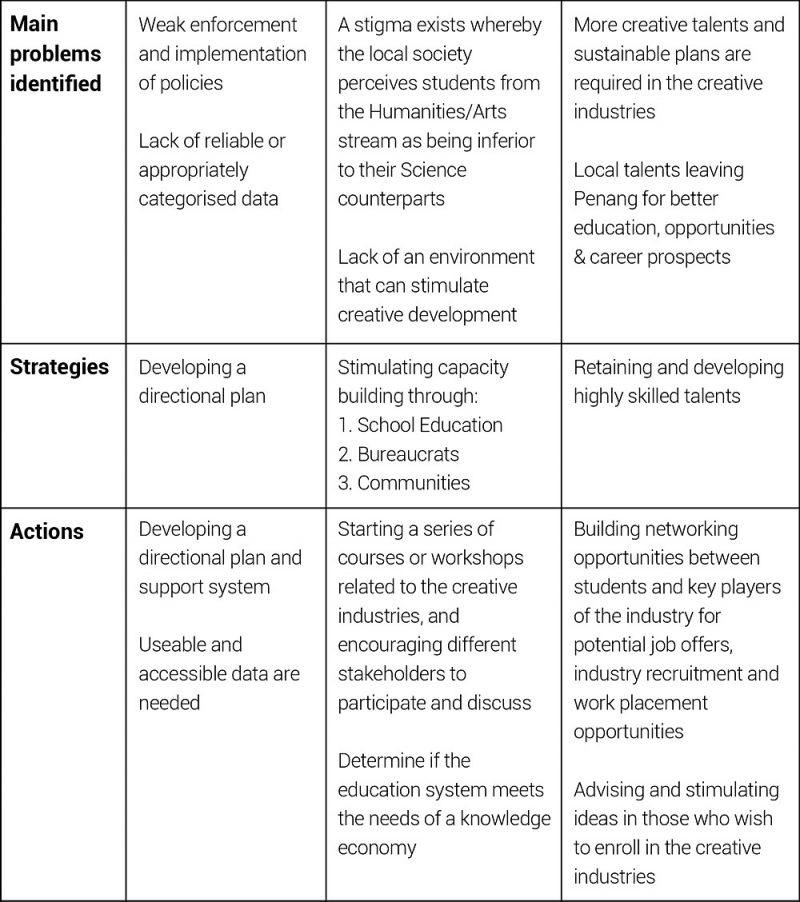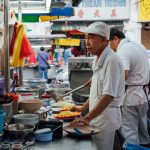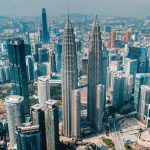Executive Summary
- The concept of creative industries has been in use since the 1990s and marks a broad wave of the digital era. In the post-industrial service economy, creativity has emerged as a prime driver in developing a knowledge economy — the quaternary sector
- To date, the National Creative Industry Policy (DIKN) is the only key policy document to outline the development of Malaysia’s creative industries. However, the policy has subsequently lost its relevance and has been criticised for its inability to perform its role well
- As a state that is greatly dependent on its manufacturing and service industry, Penang requires a directional plan to ensure that key players understand the importance of the creative industries, and are able to collectively contribute towards it
- Capacity building in the creative industries can be stimulated through the formation of an engaging creative environment whereby fields such as the arts, culture, design, and literature are mutually emphasised, and through ensuring the education system meets the needs of the knowledge economy
Introduction
The creative industries are widely defined as activities that are focused on creativity, skill and talent; and that have the potential for wealth and job creation through the generation and exploitation of intellectual property.[1] Some examples include advertising, music, film, art, architecture, museum and fashion.
The concept has been in use since the 1990s, and marks a broad wave of the digital era in creating demand for the commercial application of design, text and music, with IT support. In the post-industrial service economy, creativity has very quickly emerged as a prime driver in developing a knowledge economy — the quaternary sector.
The establishment of the Multimedia Super Corridor (MSC) in 1996 in line with Vision 2020 signified the beginning of Malaysia’s pledge to become a developed nation, with an emphasis on knowledge economy. Closer to home, the Penang Creative Industry Conference and Showcase (PCICS) in 2014 highlighted the importance of local creative industries to promote, develop, and build an interactive connection between creative industries and end users.
In reviewing the state’s current social capital and resources, this brief proposes a clearer future direction that is immediately implementable in consideration of aspects such as culture, art and technology.
Creative Industries in the Local Context
The MSC was established as Malaysia’s primary platform to nurture the growth of local technological companies, attract foreign investment, and develop cutting-edge digital and creative solutions.[2] To oversee the development of its initiatives, the Malaysia Digital Economy Corporation (MDEC), formerly known as the Multimedia Development Corporation, was established. Although technological companies play an essential role in the creative industries, Malaysia’s knowledge economy is said to be closely linked to science and technology.[3]
In aligning the concept of Malaysia’s creative industries, the National Creative Industry Policy (DIKN) was introduced in 2009 to raise public awareness, improve quality, and enlarge the domestic or international market of the country’s creative industries.[4] It also classified the industries into three main scopes, namely, multimedia creative industry; cultural arts creative industry; and cultural heritage creative industry.
Table 1: DIKN’s Classification of the Creative Industries
Based on data collected by the UN Conference on Trade and Development (UNCTAD), creative goods exported from Malaysia tripled from US$2.6bil in 2005 to US$6bil in 2014. Design goods accounted for the largest share of exports with a total of US$3.9bil, followed by audiovisuals at
US$944.5mil, and new media at US$905mil.[5]
Table 2: Malaysia’s Creative Industries Trade Performance, 2005-2014
Figure 1: Malaysia’s Creative Economy Trade Performance, 2005-2014
The Penang Creative Industry Conference and Showcase was organised in 2014 by investPenang, MDEC, The One Academy and Lemon Sky Animation to position Penang as a creative city for the Creative Multimedia Content (CMC); while the Creative Animation Triggers (CAT) was launched as a new state initiative within the George Town Heritage Site to spearhead the CMC industry by extending invitations to local and international studios to set up base in Penang.[6]
The Penang Arts District (PAD), a contemporary arts and cultural hub, was also initiated by the state to catalyse the economic growth of Penang’s creative industries – the masterplan was submitted for approval by the Penang Island City Council at the end of 2017.[7]
Focus is similarly put on improvements to the state’s infrastructure. A case in point is the recent opening of BookXcess. This bookstore, located in the Gurney Paragon retail complex, holds a catalogue of over a million books and is an added value to Penang’s creative industries. Be that as it may, there is still a need for the state to develop a directional plan, build capacity, retain as well as develop highly skilled talents.
Developing a Directional Plan
To date, DIKN is the only key policy document to outline the development of Malaysia’s creative industries. However, after the Ministry of Information, Communication and Culture was renamed the Ministry of Communications and Multimedia Malaysia, the policy unfortunately lost its relevance and its website mysteriously disappeared.[8]
The DIKN was also accused of not carrying out its duties well. Its main issue concerns the lack of a workable definition for the term “creative” that is reflected in the three aforementioned categories within the umbrella of local creative industries.
The DIKN does not encompass activities that develop and nurture creativity, but assumes that creativity is inherent in certain types of products.[9] For example, our creative industries develop multimedia products because they are easily defined as a product of creativity. But creative activities such as architecture are not considered part of the local creative industries, unlike in the UK and Taiwan that boast long histories of developing their own creative industry policies.
As a state that is greatly dependent on its manufacturing and service industry, it is important for Penang to have a directional plan in ensuring that key players understand the needs of a knowledge economy to better contribute to our country’s GDP. The emergence of creative industries is associated with urban rejuvenation, whereby the arts play a significant rebranding role for the collapsed industrial production facilities that are no longer attractive living sites.[10]
This signifies that the creative industries are often used as a tool for building local identity; and where successful, represent the unique characteristics of a certain location and its community. Taking Korea and Japan’s efforts of identity building as an example, people from the other side of the globe can easily identify if a certain film or music is of Korean or Japanese origin respectively.
The George Town World Heritage Site is undeniably one of Penang’s main attractions.[11] For the past 10 years, its heritage status has transformed Penang into a vibrant city with myriad creative elements such as heritage, art, culture and literature. It also witnessed the mushrooming of various platforms that benefited the local creative environment, including large-scale festivals like the George Town Heritage Celebrations, George Town Festival and George Town Literary Festival.
In addition, the growth of local creative industries has breathed new life into rural areas through a host of events like the Butterworth Fringe Festival, Balik Pulau Arts Festival and Penang Paddy Festival, over the course of recent years. For the purpose of identity building, such festivals are encouraged to showcase the distinctive features of their regions to motivate public visits and promote the areas’ local industries.
A long-term plan needs to be put in place to stimulate networking between different platforms and stakeholders. In the UK and Taiwan, such policies are integrated into a single regulatory authority, or with intensive cross-departmental collaboration and communication. The government plays an important role as the pinnacle of the support system; therefore, useable and easily accessible data are imperative in identifying the problems faced by the arts and local community for support to be consistently provided.
Stimulating Capacity Building
Though various discussions have been held throughout the years concerning the creative industries, these seldom materialise into concrete strategies or actual implementations. This suggests a disconnect between government sectors, industry players and local actors. Furthermore, misunderstandings about the definition of knowledge economy – it being narrowly defined as related to IT and ICT – between key players and policymakers will likely lead to further confusion about the sector and its other related components.[12]
Therefore, it is vital for the government to convey such concepts to the general public in a more accessible manner, i.e. through public talks and exhibitions. Taiwan’s creative industries are very much sustained by its cultural policy whereby combined experiences in various fields such as the arts, culture, design, and literature are mutually emphasised. Workshops, public discussions and exhibitions are consistently organised by all levels of stakeholders to convey up-to-date knowledge and current developments to the general public. In Penang, @CAT is tasked to disseminate information on digital transformation, while the PAD acts as an urban creative hub in connecting existing arts spaces to a wider audience.
Nevertheless, school education remains the most fundamental aspect in the production of a creative environment. Malaysia’s upper-secondary education usually divides students into either the Science or Humanities/Arts streams. To comply with the employment market, students who perform better in their academic studies are guaranteed a place in the Sciences, while the rest are placed in the Humanities/Arts stream. This unfortunately creates a stigma for students, and worse still, a societal perception that the latter is inferior to its Science counterpart.
Unsurprisingly, most creative industries-related courses provided by higher educational institutions in Penang are focused on multimedia, with several on art and design, architecture, and culinary. To support the development of the local creative industries, a study is needed to determine if the education system actually meets creative needs while simultaneously exploring comprehensive ways of improving on them. This is because the growth of any industry or sector should always be accompanied by the growth in skillset of its talents.
Retaining and Developing Highly Skilled Talents
In spite of that, Penang is not short of talents with local and foreign studies backgrounds; in fact, most creative hubs in Penang are supported by them. In a paper published by Kajian Malaysia on April 15, 2017 which surveyed 35 architectural firms and 16 employers, the employers generally opined that Penang suffers no shortage of architects. However, there is a rather critical phenomenon of “brain drain” currently afflicting the industry — a prevalent issue in Penang.[13]
This suggests that the state is still lacking in means to attract and retain young creative talents, i.e. adults in their late 20s and early 30s. It merely functions as an experience-gaining platform for young creative architects, for example, before they move on to bigger cities such as KL, Singapore and Dubai, where higher salaries, glamour and perquisites await them.[14]
Continuous backing from the administration will ensure that both talents and startups have the opportunity to develop, similar to how the UK has positioned its creativity industry as the world’s leading creative industry with a gross value add of £101bil (RM544.29bil) and 2.12 million jobs offered (one in 11 of all UK jobs) in 2017 itself.[15]
Though there is currently a high percentage of unpaid internships in the UK, £2mil (RM10.78mil) of public money and £12mil (RM64.70mil) in-kind industry support have been allocated to the creative careers programme, which hopes to enable meaningful encounters with creative businesses for 160,000 students by 2020, and provide around two million young people across the UK with better online and in-person creative careers advice. The government funding is also to be used to help creative employers diversify their workforce and plug skills shortages by developing apprenticeship standards.[16]
As Penang aspires to become a knowledge economy and develop a greater span of highly skilled creative workforce, there is a need to attract and retain creative and technically-advanced individuals. According to a report by Khazanah Nasional and World Bank, policymakers found that successful strategies involve three programmes: (1) Developing Penang into a location of choice for people to want to live, work, raise a family and retire; (2) Developing excellent educational establishments, with lifelong learning to ensure that professionals have continued opportunities for upgrading their skills and interacting with leaders of their fields; and (3) Leveraging on those who have left, but who still retain ties of family and culture.[17]
In addition to developing highly skilled talents, ideas can be stimulated in those who wish to enter the creative industries. For example, a report prepared by the British Council presented the resources, impacts and challenges faced by Malaysia’s Creative Hub, and also included a Creative Hub kit illustrating the various experiences and approaches in building successful and sustainable creative hubs.[18] This acts as an essential support for those who are interested in understanding the actual situation, and are considering the possibility of dedicating their talents to the creative
industries in Penang.
Table 3: Summary of Problems Identified, Strategies and Actions
Concluding Remarks
While Penang’s creative industries witnessed various developmental efforts in the past decade, its environment, however, remains fragmented. More effort in policy thinking should be encouraged to build a healthier ecosystem.
It is worth noting that the core of these suggestions reflect the philosophy of the state’s development policy — Penang2030 — where technology, economy and social inclusiveness are strongly emphasised. While the creative industries are commonly assumed as a tool to boost Penang’s economic development, their essence is in fact deeply rooted in local dynamic, social and cultural contexts, where the “Made in Penang” brand originates. Therefore, it is important that substantial dialogues between stakeholders from various sectors are prioritised in order to realise the concept of social inclusiveness.
With technology as its forte, the digital revolution is often regarded as the driving force for Penang’s future. Nevertheless, its creative industries are a promising field to lead the state to the next level, both economically and socially. But given the holistic nature through which comprehensive knowledge and integrated platforms are emphasised, its success will very much depend on the willingness and ability for effective governance, as well as social inclusiveness.
[1] Creative Industries Mapping Document, 2001, Foreword of Secretary of State, pp. 5 https://assets.publishing.service.gov.uk/government/uploads/system/uploads/attachment_data/file/183544/2001part1-foreword2001.pdf
[2] Championing Malaysia’s Digital Economy, https://www.mdec.my/about-mdec/corporate-profile
[3] Siti Salwa Isa, Siti Suriawati Isa and Abu Ali, The Development of the Creative Economy in Malaysia as Experienced in Two Different Case Studies, IEEE Symposium on Business, Engineering and Industrial Application (ISBEIA), 2011, pp. 523.
[4] Dasar Industri Kreatif Negara, 2009, pp. i. https://www.kkmm.gov.my/pdf/Dasar/dikn.pdf
[5] UNCTAD, Creative Economy Outlook: Trends in International Trade in Creative Industries 2002-2015 and Country Profiles 2005-2014. 2018, pp. 294-295. https://unctad.org/en/pages/PublicationWebflyer.aspx?publicationid=2328
[6] Penang Creative Multimedia Content Industry: http://investpenang.gov.my/files/investment-updates/17/creative_multimedia_content_pcics_penang.1418980366.pdf
[7] Penang Arts District (PAD): https://www.penang.gov.my/kenyataan-akhbar/360006-penang-arts-district-pad
[8] Barker, T. and Y. B. Lee. Making creative industries policy: The Malaysian case. Kajian Malaysia 35(2), 2017, pp. 24. https://doi.org/10.21315/km2017.35.2.2
[9] Ibid., pp.24
[10] Ieva Moore, Cultural and Creative Industries Concept – a Historical Perspective, Procedia – Social and Behavioral Sciences 110, 2014, pp.743.
[11] Penang Global Tourism, Penang tourism Survey 2017, pp.1.
[12] Siti Salwa Isa, Siti Suriawati Isa and Abu Ali, The Development of the Creative Economy in Malaysia as Experienced in Two Different Case Studies, IEEE Symposium on Business, Engineering and Industrial Application (ISBEIA), 2011, pp. 523.
[13] Suet Leng Khoo, Nurwati Badarulzaman, Narimah Samat and Sharifah Rohayah Sheikh Dawood, Locational decisions in a creative city: evidence from Penang’s architectural firms. Kajian Malaysia 35(1), 2017, pp. 83.
[14] Ibid., pp 86.
[15] 15 UK Creative Industries – Value & Jobs: http://www.thecreativeindustries.co.uk/resources/infographics
[16] Multi-million-pound initiative to increase access to creative careers: https://www.artsprofessional.co.uk/news/multi-million- pound-initiative-increase-access-creative-careers
[17] Homi Kharas, Albert Zeufack & Hamdan Majeed, Cities, People and the Economy: A Study on Positioning Penang, Khazanah Nasional Berhad & The World Bank, 2010, pp 70.
[18] Our Work in Arts: https://www.britishcouncil.my/programmes/arts
Managing Editor: Ooi Kee Beng, Editorial Team: Regina Hoo, Nur Fitriah, Ong Wooi Leng
You might also like:
![From Means of Survival to Tourism Gems: A Study of Street Food Prospects in Penang]()
From Means of Survival to Tourism Gems: A Study of Street Food Prospects in Penang
![Persevering towards Recovery for Penang’s Tourism Industry]()
Persevering towards Recovery for Penang’s Tourism Industry
![Developing the Halal Industry in Penang: An Overview of Policy Issues and Some Possible Solutions]()
Developing the Halal Industry in Penang: An Overview of Policy Issues and Some Possible Solutions
![Time for Malaysian States to Introduce “Non-Constituency Seats” (NCSs)]()
Time for Malaysian States to Introduce “Non-Constituency Seats” (NCSs)
![The Digital Free Trade Zone – A Path to Inclusive Growth?]()
The Digital Free Trade Zone – A Path to Inclusive Growth?


